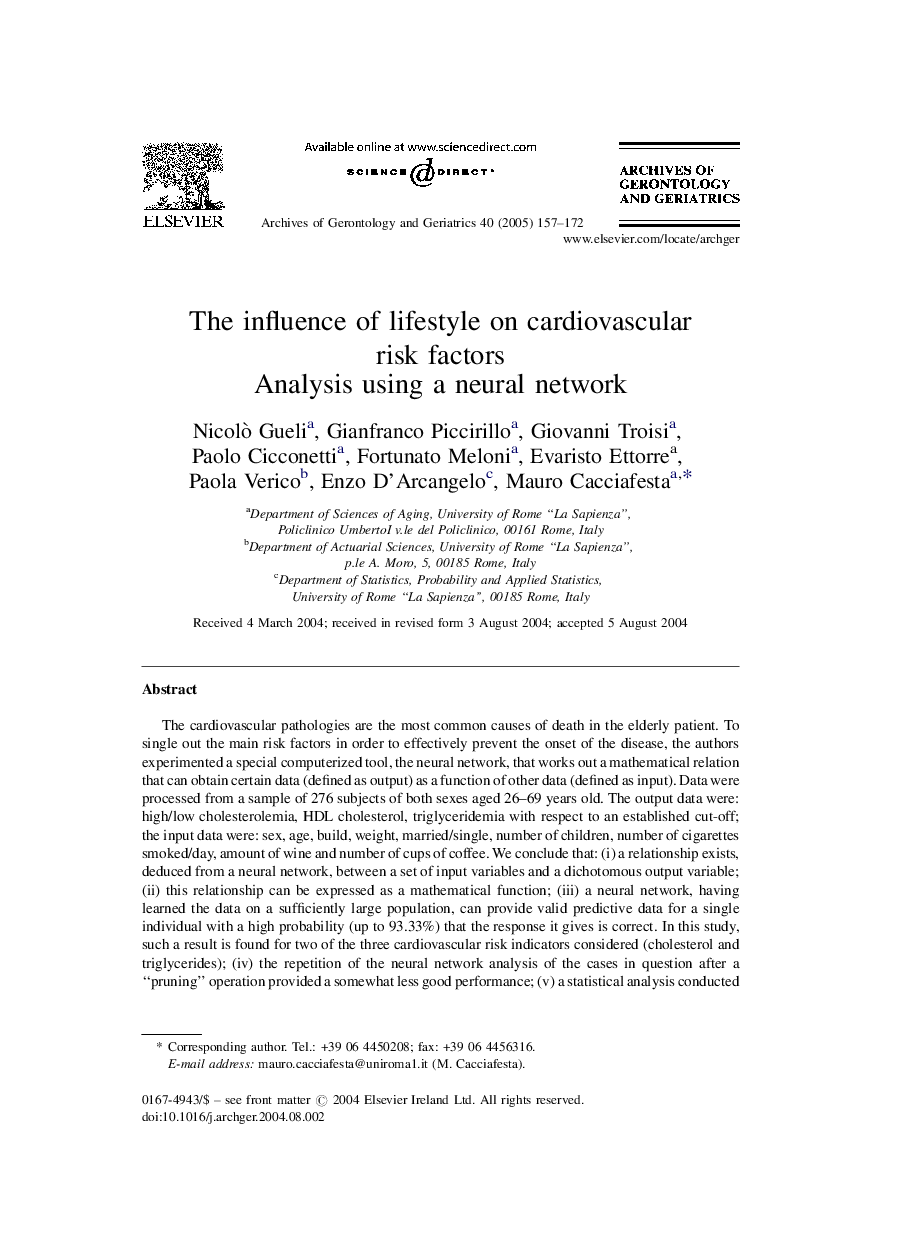| Article ID | Journal | Published Year | Pages | File Type |
|---|---|---|---|---|
| 9878935 | Archives of Gerontology and Geriatrics | 2005 | 16 Pages |
Abstract
The cardiovascular pathologies are the most common causes of death in the elderly patient. To single out the main risk factors in order to effectively prevent the onset of the disease, the authors experimented a special computerized tool, the neural network, that works out a mathematical relation that can obtain certain data (defined as output) as a function of other data (defined as input). Data were processed from a sample of 276 subjects of both sexes aged 26-69 years old. The output data were: high/low cholesterolemia, HDL cholesterol, triglyceridemia with respect to an established cut-off; the input data were: sex, age, build, weight, married/single, number of children, number of cigarettes smoked/day, amount of wine and number of cups of coffee. We conclude that: (i) a relationship exists, deduced from a neural network, between a set of input variables and a dichotomous output variable; (ii) this relationship can be expressed as a mathematical function; (iii) a neural network, having learned the data on a sufficiently large population, can provide valid predictive data for a single individual with a high probability (up to 93.33%) that the response it gives is correct. In this study, such a result is found for two of the three cardiovascular risk indicators considered (cholesterol and triglycerides); (iv) the repetition of the neural network analysis of the cases in question after a “pruning” operation provided a somewhat less good performance; (v) a statistical analysis conducted on those same cases has confirmed the existence of a strong relationship between the input and the output variables. Therefore the neural network is a valid instrument for providing predictive in a single subject on cardiovascular pathology risks.
Related Topics
Life Sciences
Biochemistry, Genetics and Molecular Biology
Ageing
Authors
Nicolò Gueli, Gianfranco Piccirillo, Giovanni Troisi, Paolo Cicconetti, Fortunato Meloni, Evaristo Ettorrea, Paola Verico, Enzo D'Arcangelo, Mauro Cacciafesta,
